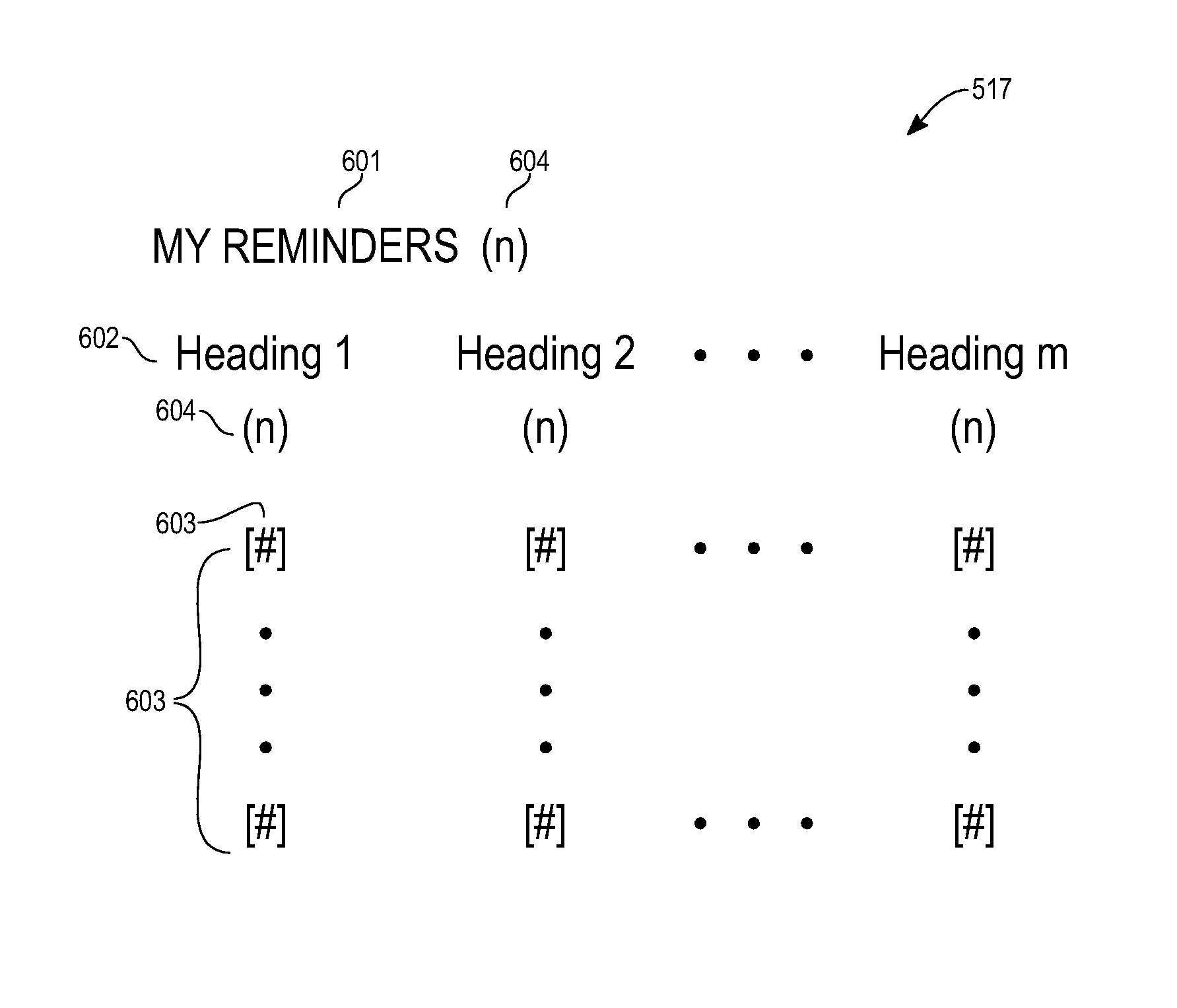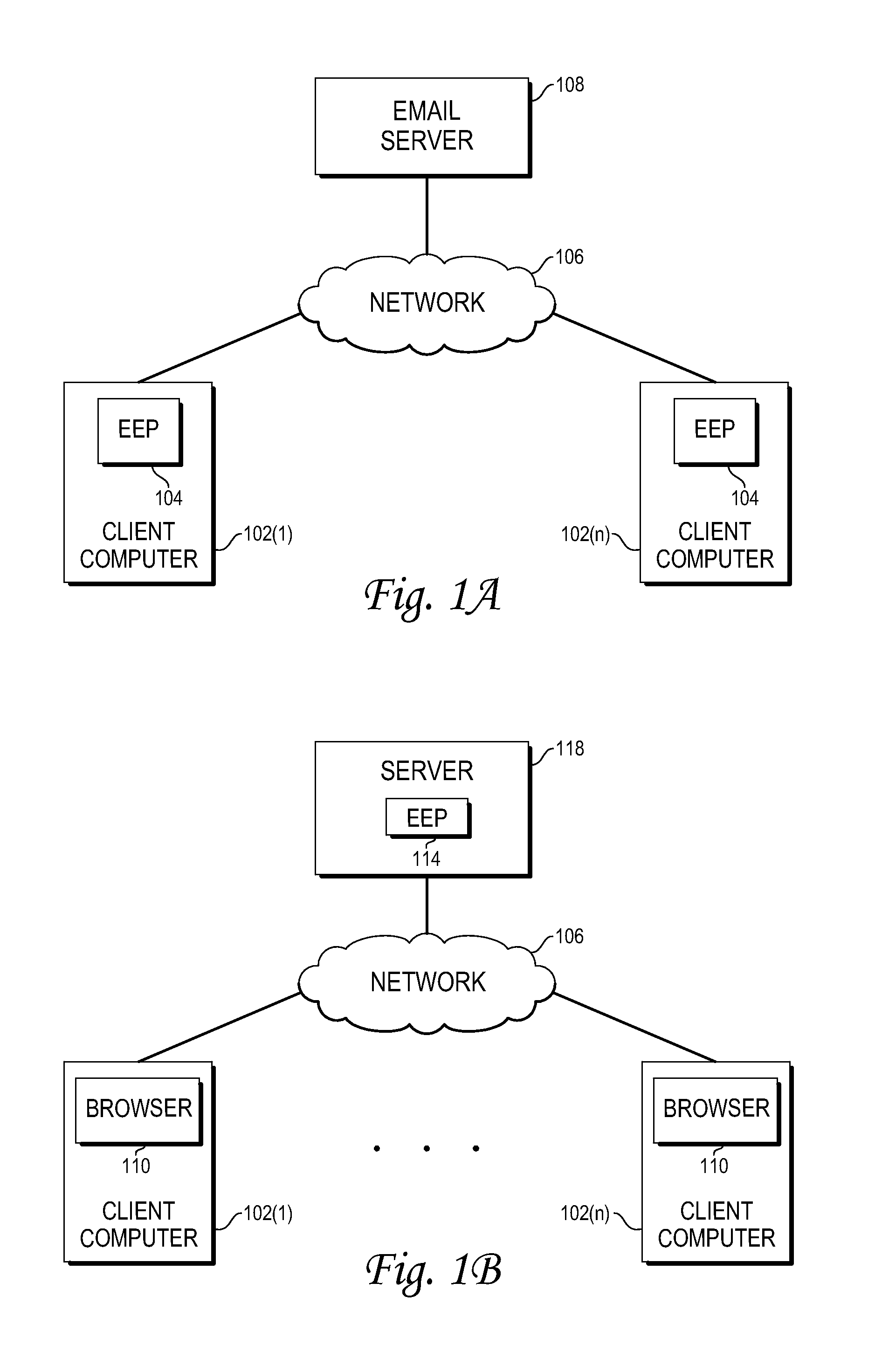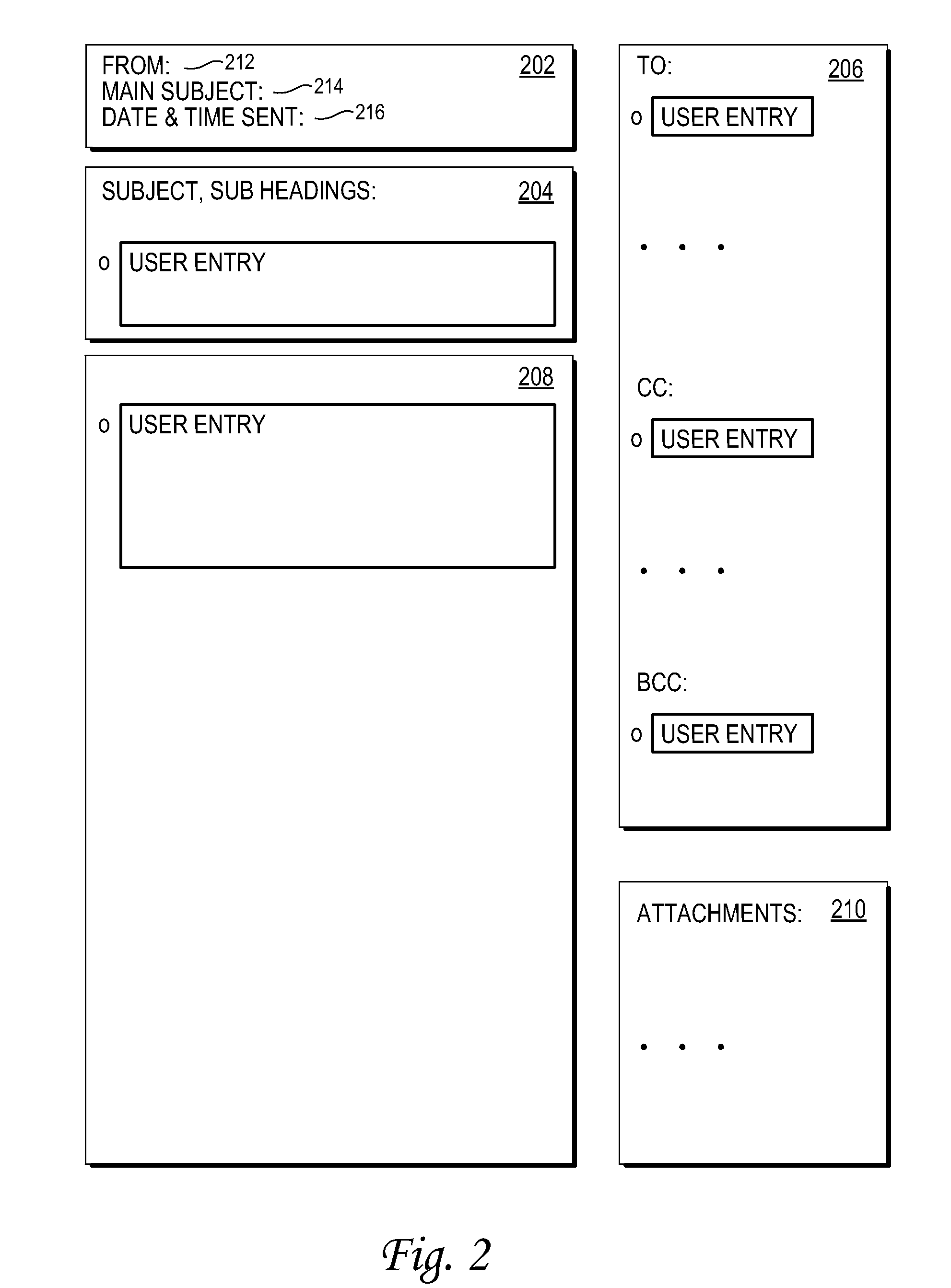Mechanism for implementing reminders in an electronic messaging system
a technology of electronic messaging system and reminder, applied in the field of electronic messaging system reminder, can solve the problems of cluttered inbox, cluttered inbox, sent and deleted folders, and increasing difficulty in managing emails, new incoming and new outgoing, and their subsequent replies and forwarding,
- Summary
- Abstract
- Description
- Claims
- Application Information
AI Technical Summary
Benefits of technology
Problems solved by technology
Method used
Image
Examples
Embodiment Construction
)
[0025]In the following description, for the purposes of explanation, numerous specific details are set forth in order to provide a thorough understanding of the present invention. It will be apparent, however, that the present invention may be practiced without these specific details. In other instances, well-known structures and devices are shown in block diagram form in order to avoid unnecessarily obscuring the present invention.
Overview
[0026]One embodiment of the present invention enables email to be used to emulate a conversation or meeting. To start the conversation or meeting (hereinafter, just conversation for the sake of brevity), a user sends an initial email to a set of participants. This initial email sets forth a particular topic for discussion. Thereafter, the participants may provide input on the topic by sending response emails, with each response email containing a set of new content. Current email systems are capable of providing what has been described thus far. ...
PUM
 Login to View More
Login to View More Abstract
Description
Claims
Application Information
 Login to View More
Login to View More - R&D
- Intellectual Property
- Life Sciences
- Materials
- Tech Scout
- Unparalleled Data Quality
- Higher Quality Content
- 60% Fewer Hallucinations
Browse by: Latest US Patents, China's latest patents, Technical Efficacy Thesaurus, Application Domain, Technology Topic, Popular Technical Reports.
© 2025 PatSnap. All rights reserved.Legal|Privacy policy|Modern Slavery Act Transparency Statement|Sitemap|About US| Contact US: help@patsnap.com



